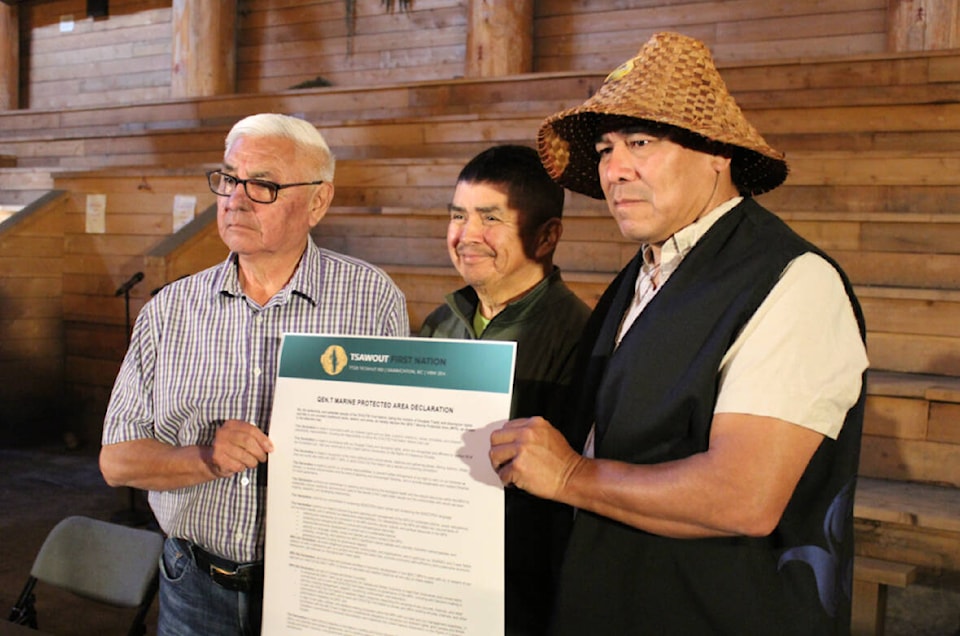John Etzel remembers a time when there was plentiful wildlife in the waters off of James Island.
“The ocean floor was covered with sea urchins, just covered. You could see thousands of them running around,” the acting Chief for Tsawout said.
But Etzel reminds members of the community that “up here, there are around 10,000 crab traps – 10,000 crab traps just raping our Dungeness crab.”
In hopes of restoring the population of sea creatures off the North Saanich and Central Saanich waters, the Tsawout Nation has declared the QEN,T as a Marine Protected Area. This means that QEN,T is a new Indigenous Protected and Conserved Area (IPCA) that protects approximately 155 square kilometres of ocean off the eastern coast of the Saanich Peninsula on Vancouver Island.
IPCAs are lands or waters where Indigenous governments have the primary role in protecting and conserving ecosystems through Indigenous laws, governance and knowledge systems, according to the Conservation through Reconciliation Partnership that was signed Wednesday (June 21).
“More than 170 years ago, our ancestors signed a treaty that recognized and protected our right to carry on our fisheries as formerly,” said Tsawout Chief Harvey Underwood. “This right includes not only the right to catch fish, but also the right to manage and protect our fisheries as we’ve done since time immemorial. The QEN,T Marine Protected Area is a significant step for Tsawout First Nation to take back our jurisdiction and ensure that our treaty rights are respected and upheld.”
Since the Tsawout nation signed off on declaring the land as an IPCA, the next steps to follow will take place after consulting with provincial and federal governments.
“We want to you to come to our table and listen to our needs and our wants,” Etzel said, adding that “it has to be us to bring our beaches back to life.”
Fisheries technician Dion Joseph explained the different enforcement that comes with an IPCA, saying the nation might be able to “board vessels and check licences if they’re fishing in closed areas we can send them on their way.”
“It will enable us to hold the commercial fishery outside our IPCA so that we can obtain the fish that are coming in because they’re being intercepted before coming into our bay where we fish. This will enable us to have a nice fishery for all of the community, so I can put food on everybody’s table,” Joseph said.
Tim Clermont, executive director of the Guardians of our Salish Estuaries Society (GooSE), expressed his excitement and need for the IPCA.
“This the first time in the estuaries seas and the first one near an urban area like Victoria. The federal government has made a declaration to try to protect 30 per cent of Canada by 2030 and the only way those kinds of targets are going to be met is through IPCA.”
“The lack of ability for the federal and provincial governments to properly regulate and enforce their regulations. They’ve got the laws, but they’re very reluctant to enforce them,” said Adam Olsen, MLA for Saanich North, who is working with the provincial government to figure out the next steps.
“At other levels of government, they’ll very much be paying attention to this and having to align their decision making into what that (Tsawout) is declaring,” says associate professor of anthropology at the University of Victoria, Brian Thom. Although IPCAs are still fairly new to the country, Thom says “the IPCA movement is something that’s taking a lot of traction, not only in Canada but across the world.”
ALSO READ: Langford school marks National Indigenous Peoples Day



